Gumboro: Control of virus population and results
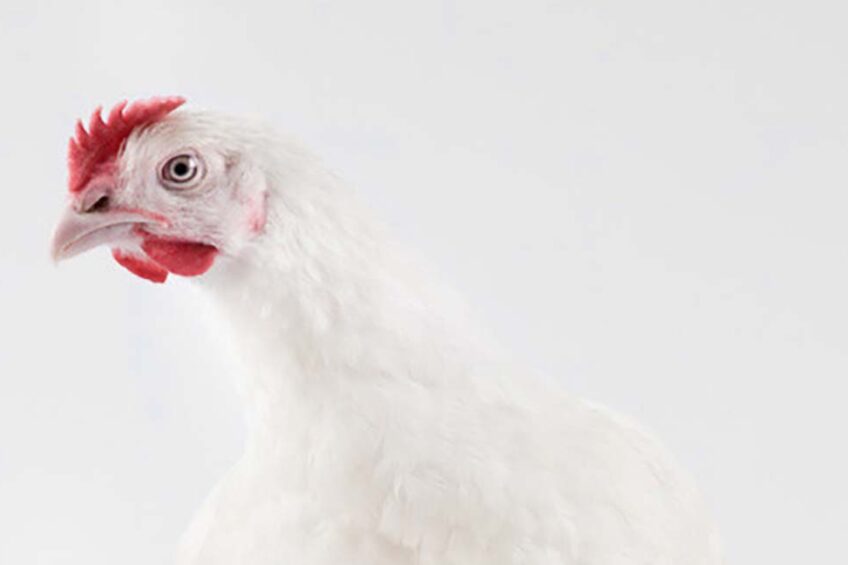
As discussed in the previous article, the main objective to achieve proper Gumboro disease control is to block the bursa by vaccine strain. This blockage avoids the field or challenge virus to replicate in the bursa and not be spread in the environment, what is called “virus shedding control”, or simply virus control.
The image below shows the expected result.
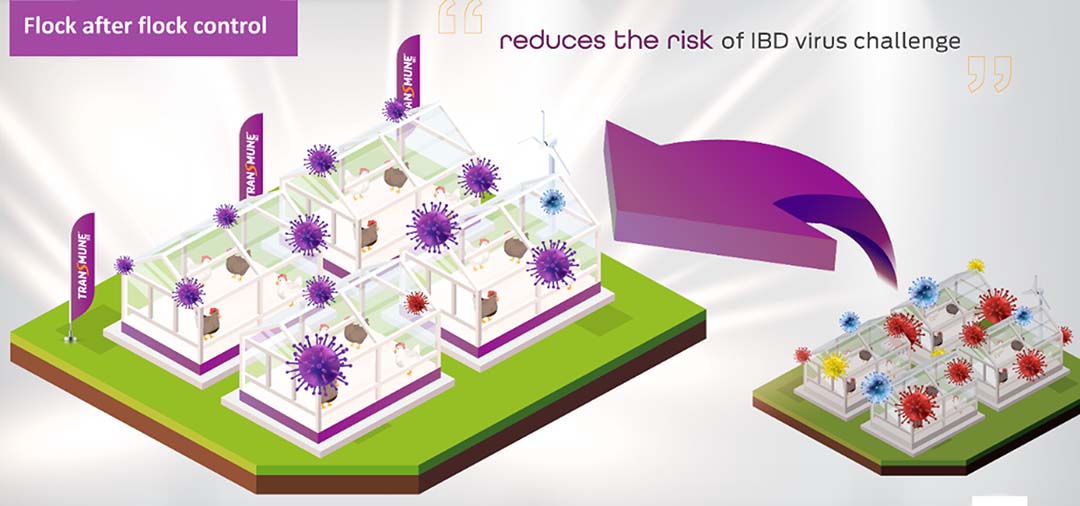
A strategy to consider is the MDAs (maternal delivered antibodies) will be essential for early-life protection, in the first 2 weeks of life. After the decrease of the MDA level the chick should build their own active immunity.
Regarding virus control, the aim is not just to achieve clinical protection against disease outbreaks, but fundamentally prevent the risk of replication of the field strains, what we call ‘prevention’.
Subclinical Gumboro disease
Currently, as the Gumboro disease is in a subclinical form, the virus control (protection + prevention) can have a positive impact on the results in the field and in the processing of the broiler’s carcass in the slaughterhouse.
Part of the reason for the increase of the subclinical Gumboro disease form, is the appearance of several variant IBDV strains, and the perception from the producer that is not affecting them, a deeper investigation should be done to better understand the status of the control.
Around the globe
In a recently conducted, different variant strains were detected around the globe, and some of them were reassortant strains, as the one circulating in Europe, belonging to the genotype A3B1 that are a combination of VP2 from very virulent strain (VVIBDV) and VP1 from classical strains.
Besides that we can mention the variant from China (SHG19), from Brazil (G15), from the Philippines, Var.A, Var.E, as many others.
Figure 1 – Worldwide IBDV presence (Ceva data).
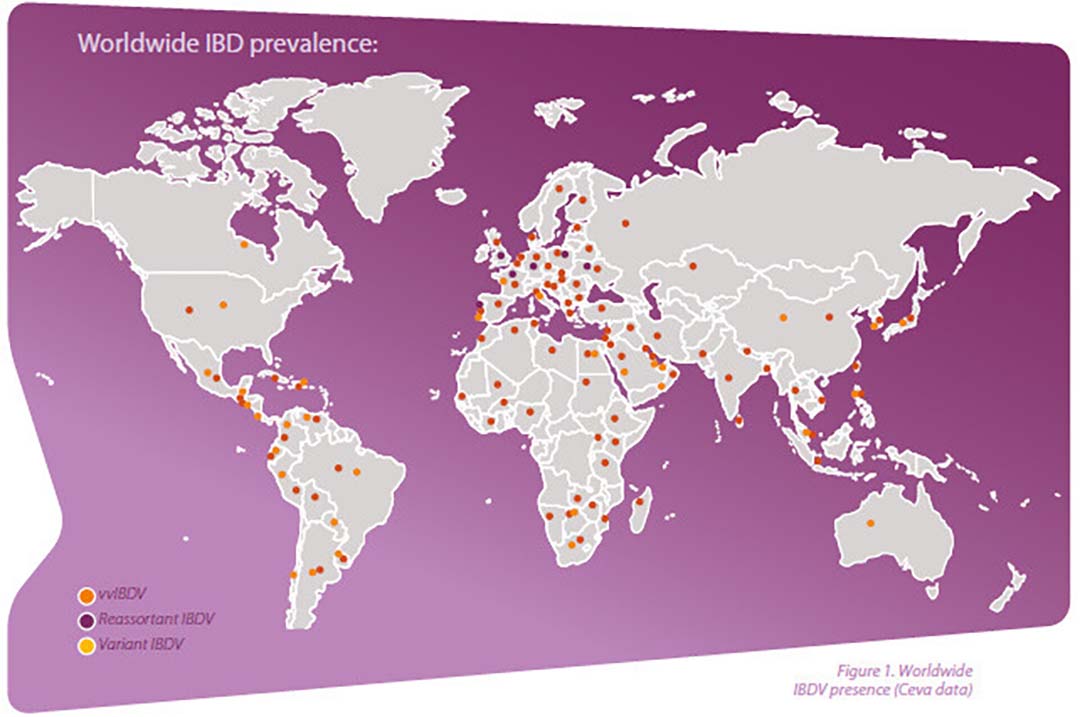
As mentioned at the beginning of this article, using a proper strategy of control is the recommended. The results in the field are clear, showing that Transmune along the years is controlling Gumboro disease by protecting the chickens and preventing the risk of the challenge.
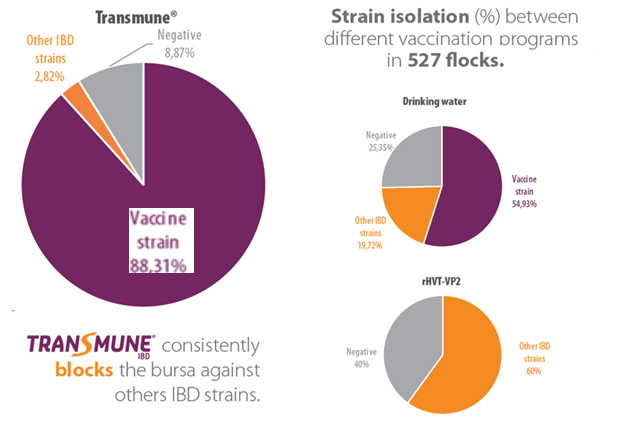
Considering the results on performance, when virus control is achieved, one example of monitoring carried out in Latin America showed improvement in several performance parameters in the field (feed conversion, mortality at 42 days, average daily weight gain, and performance index) of a broiler production operation, and in the processing on the slaughterhouse (condemnations, airsacculitis) when compared Transmune versus an HVT-ND-IBD (see image below).
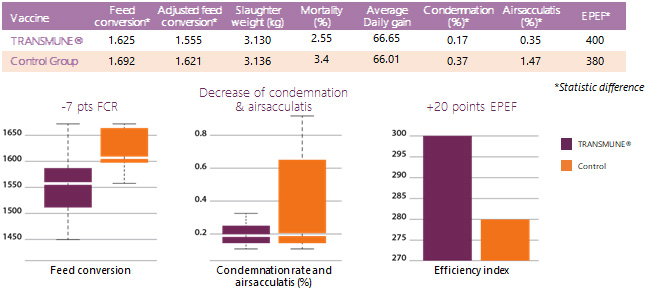
Conclusion
As summary, to have IBD control and keep the consistency of the broiler production, provide protection against clinical and sub-clinical infection, and the prevention of field virus replication is essential. It should be done safely, with the immune-complex vaccine Transmune, that adapts to different maternal delivered antibodies, blocking the bursa for better Gumboro disease control.






